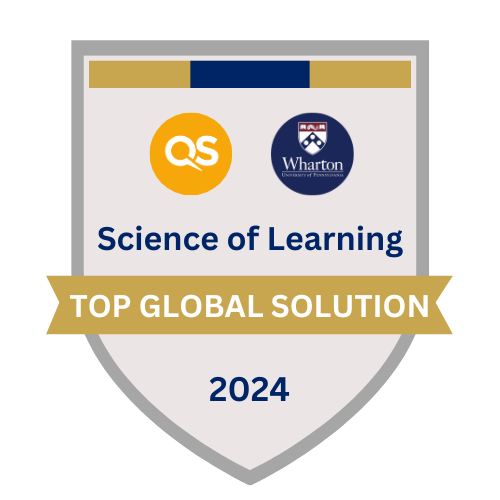What Are Cognitive Skills?
What Are Cognitive Skills?
The core skills your brain uses to think, read, learn, remember, reason, and pay attention.
What is Attention?
A core cognitive skill that requires you to selectively and continuously concentrate while ignoring other information. It is our attention that allows us to concentrate for a long period of time, shift our focus between two or more things, concentrate on one thing while ignoring all distractions, and focus on two or more things simultaneously.
Effect on teaching and learning
An educator’s success is mediated by the functioning of their students’ cognitive skills, as they rely upon these to learn the material. Attention is one of these core cognitive skills, as it plays a critical role in learning. Unfortunately, while students are often told to “pay attention”, they are rarely taught how. According to the Center for Disease Control and Prevention, just one generation ago ADHD affected only approximately 1 in 25 students in the United States. Today, 1 in 5 high school boys are diagnosed with ADHD. This is problematic, as students who become inattentive as a result of learning failures may be misdiagnosed and treated for ADHD or other learning disorders, when the inattentiveness may be rooted elsewhere.
Learning and human development theories show that students experience better learning outcomes when they actively engage in the classroom and take part in the construction of their knowledge. As educators, understanding attention is the first step in identifying support for your students. As with any other cognitive skill, attention witnesses varying levels across individuals and, therefore, figuring out what makes each and every one of your students pay attention is challenging. COGx Educator Program draws insights from the science of learning to teach how to capture, keep, and gauge student attention. Learn More
What is Working Memory?
Memory in action; the ability to remember and use information actively while thinking or completing a task. Working Memory is a critical skill, playing a strong role in a learner’s ability to encode and retrieve information (Long Term Memory) as well as the ability to successfully manage one’s thinking and actions towards a goal (Executive Functioning).
Effect on teaching and learning
The limited capacity of working memory and the potential of overloading it is a crucially important insight for educators, especially if we are attempting to engage students in learning through lectures that present auditory and/or visual information for extended periods of time. Unless students are incredibly adept or trained at processing, encoding, and retrieval, their learning may be greatly compromised. Most commonly in lecture-based learning environments, the reality is that students are relying on their Working Memory to hold and manipulate only a fraction of what they are being taught; they are given too little time to properly encode and learn the information. Did you know that attention, working memory, and processing speed are three interdependent processing skills that are essential for learning?
For a deep dive into the working memories subsystems refer to COGx PD program Module 3 – Leverage Working Memory.
What is Executive Function?
A set of complex skills that manage our behaviors relating to setting and completing goals; it relies on the strength of prefrontal lobe skills (such as attention, working memory, and processing speed) to allow our brains to properly manage, organize, and act on information.
Effect on teaching and learning
While the term executive function is being used in schools more and more, educators are hard pressed to find what executive function skills are and tangible ways to support their development. Executive function skills are involved with mediating a learner’s behavior, emotion, and cognition while working toward a goal. Executive function skills also mediate a person’s tendency toward risky behaviors including crime and addiction, our ability to make and save money, our social skills, and our mental and physical health. The broad set of skills involved with executive function are intricately connected to the function and regulation of other cognitive functions, and thus understanding these skills has obvious implications for the classroom.
Explore Module 5 – Support Executive Function for all see how the program teaches educators to support their students as they regulate their own learning and work toward small and large goals. This includes taking notes during class, following complex directions, completing a project, and more.
What is Metacognition?
Refers to knowledge of how learning occurs, awareness of one’s learning ability, and the ability to regulate learning behaviors to achieve a desired goal. It involves a learner’s ability to plan, monitor and assess their learning. Metacognition plays a significant role in a student’s academic achievement across disciplines and has been identified as a key differentiator between sophisticated, successful learners and those who struggle, especially at learning independently. Weak Metacognition can “mask” the performance of underlying skills, like Long-Term Memory, because the learner is struggling to manage the skills needed for the learning task. In this example, a student struggling with test taking may be thought to have a weakness in memory that is actually a weakness in Metacognition.
Effect on teaching and learning
What is Neuroplasticity?
Neuroplasticity is the brain’s ability to adapt through forming new neural connections throughout life. The brain’s ability to change both its physical structure and its functional organization in response to experience, demonstrate how the brain can adapt and fundamentally enhance it’s capacity to learn more efficiently when cognition is properly targeted.
Effect on teaching and learning
What is Processing Speed?
Processing speed refers to our ability to perceive, integrate, and respond to visual, auditory, or motor information. The pace at which you take information, make sense of it, and begin to respond; it is a reflection of mental efficiency. Input refers to the amount of time it takes a person to understand and combine information, and output refers to the amount of time it takes a person to respond, which might include reacting to a situation or making a decision. Integration is the stage between input and output where information is being interpreted and sent to Working Memory/Long-Term Memory.
Effect on teaching and learning
What is Long Term Memory?
Memory that requires storing information and being able to recall that information after a long period of time. Semantic Memory refers to our collection of facts, meanings, concepts and knowledge that we have learned. Episodic Memory refers to details of time, place, and context, as well as aspects beyond the facts of an event. Long Term Memory is highly malleable and easily improved through the application of evidence-based techniques and strategies.
Effect on teaching and learning
What is Motivation?
An internal state or condition that affects decisions and behaviors; it activates behavior and gives it direction.





